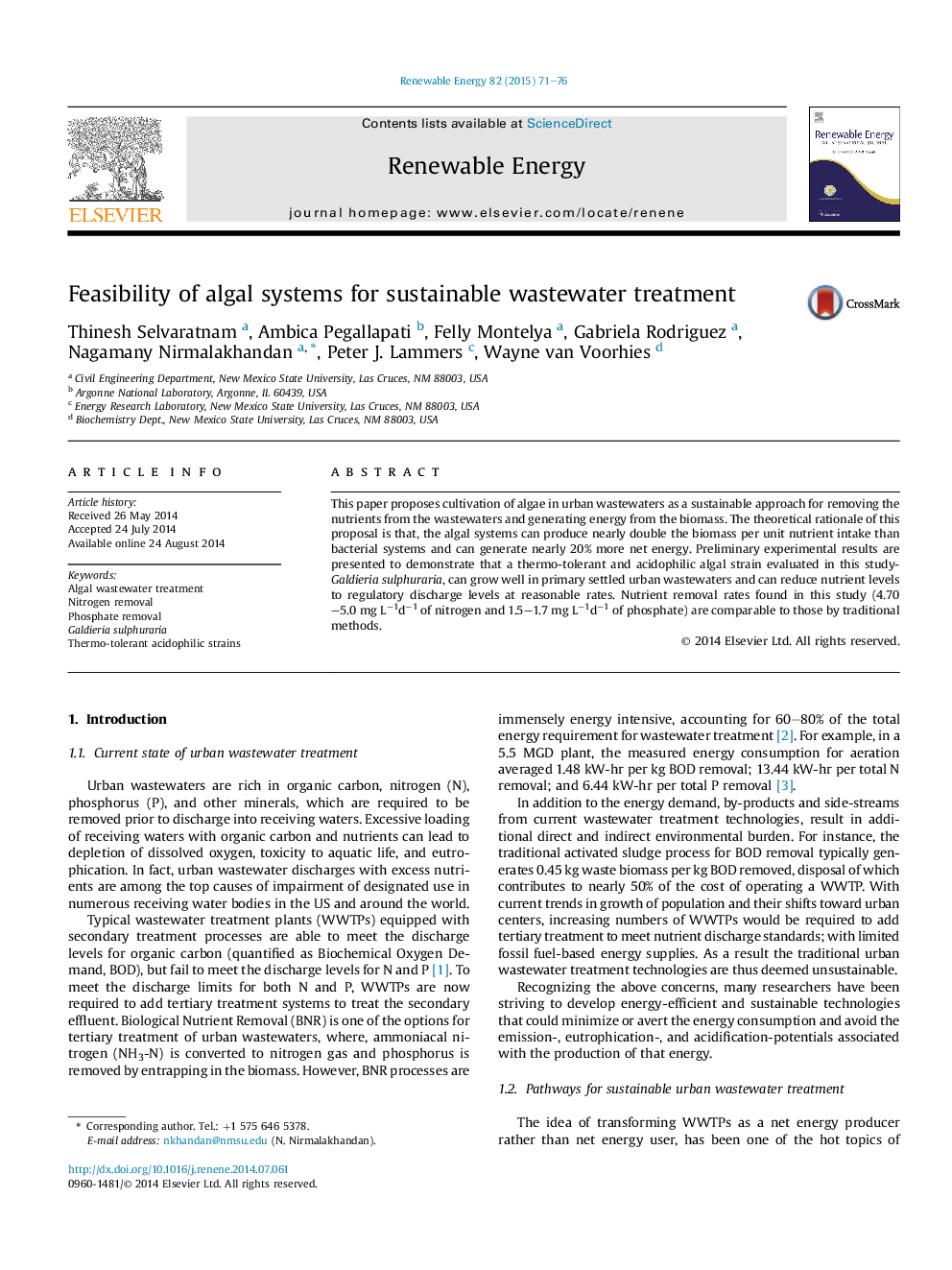| Article ID | Journal | Published Year | Pages | File Type |
|---|---|---|---|---|
| 299903 | Renewable Energy | 2015 | 6 Pages |
•Evaluated cultivation of two algal strains in primary-settled wastewater.•Demonstrated growth rates of 0.34–0.37 g/L-d in wastewater.•Demonstrated nitrogen removal rates of 4.7–5.0 mg/L-d.•Demonstrated phosphate removal rates of 1.5–1.7 mg/L-d.
This paper proposes cultivation of algae in urban wastewaters as a sustainable approach for removing the nutrients from the wastewaters and generating energy from the biomass. The theoretical rationale of this proposal is that, the algal systems can produce nearly double the biomass per unit nutrient intake than bacterial systems and can generate nearly 20% more net energy. Preliminary experimental results are presented to demonstrate that a thermo-tolerant and acidophilic algal strain evaluated in this study-Galdieria sulphuraria, can grow well in primary settled urban wastewaters and can reduce nutrient levels to regulatory discharge levels at reasonable rates. Nutrient removal rates found in this study (4.70–5.0 mg L−1d−1 of nitrogen and 1.5–1.7 mg L−1d−1 of phosphate) are comparable to those by traditional methods.
Graphical abstractFigure optionsDownload full-size imageDownload as PowerPoint slide
